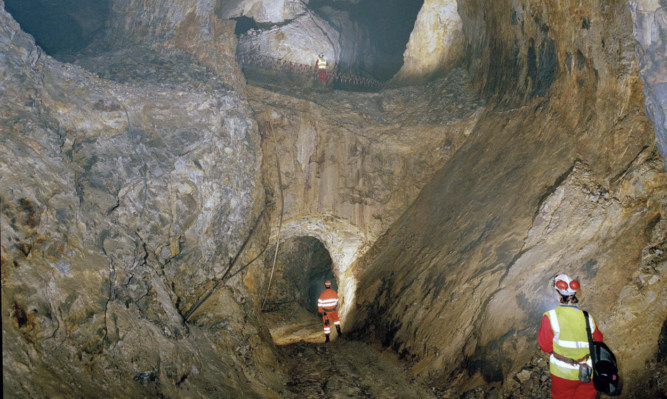A major oil field services company is revisiting plans to develop a multi-million-pound barite mine at a Perthshire beauty spot.
Schlumberger subsidiary M-I SWACO said the proposed Duntanlich development which would be located on the northern side of Farragon Ridge above Loch Tummel and tourist trap the Queen’s View would replace its mine at Foss, which it has operated since 1985.
The developer said it expected to produce 120,000 tonnes of barite, principally used as a weighting agent for drilling fluids, from Duntanlich on an annual basis and the resource was sufficient to supply the entire requirement of the UK oil and gas industry for the next 50 years.
A development at Duntanlich was first mooted by M-I Great Britain in 1991, but an application to mine the site was knocked back by the local council the following year.
A public inquiry was held and the proposed development eventually came before the Court of Session in 1996 but was thrown out again on grounds including the impact on the landscape and visual amenity, in particular from the Queen’s View.
M-I SWACO yesterday said the proposed new mining operation was specifically designed to be hidden from key viewpoints.
“The physical attributes of the mine development should intrude as minimally as possible,” the firm said in new project overview documents.
“The mine site and track should not be visible from the Queen’s View. Indeed from locations, such as the recreational path within Allean Forest, where more elevated views of Loch Tummel are obtained, the mine site should not be seen and potentially visible sections of the track minimised.”
The Foss operation produces 42,000 tonnes of barite annually and employs 18 workers. It supports a further 30 jobs at Aberfeldy-based Barhaul, who crush the raw mineral before transporting it by road to M-I SWACO’s facility in Aberdeen.
The firm said yesterday the Duntanlich orebody a reserve estimated at 7.5m tonnes was unique in the UK and its development would almost triple current production rates and directly create around 30 skilled jobs, whilst also providing a boost to local contractors.
The proposed new cross-country access route into the site would be from the A827 close to the A9 Ballinluig junction, passing through the Atholl Estate and Fonab forest to the Pitlochry estate at Cluniemore.
Ian Hughes, project manager for M-I SWACO, said the development would ensure the UK was self-sufficient in barite production.
“Such a project will not only have a significant positive local economic impact, diversifying the economy of this rural area where employment is reliant on tourism and forestry, but will also have national significance in terms of providing vital continuity of supply for the North Sea oil and gas industry,” Mr Hughes said.
“We have learned a lot from the time of the previous application, and have made significant adjustments to our proposals.
“Should these be approved by Perth and Kinross Council we could see barite being extracted by the end of 2017.”
The firm has launched a new project website at www.duntanlich.com. It will hold community engagement events in Ballinluig, Aberfeldy and Pitlochry next month ahead of launching a new planning application in the spring.
